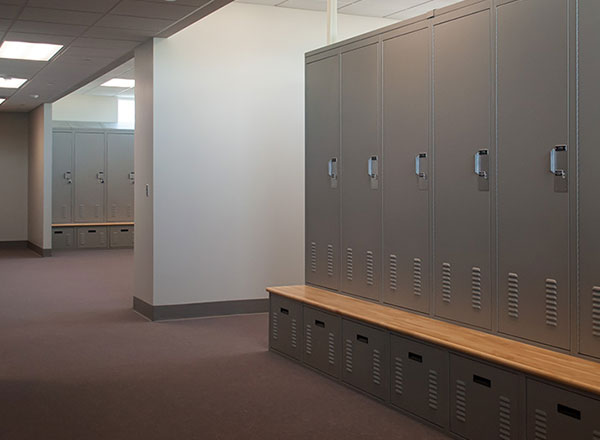
Room Size
The physical constraints of the locker room should be your first consideration. Also keep in mind that the rules for safe entry and egress that apply to any room in your facility also apply to the locker room.
Number of Officers & Staff
You’ll also need to consider is how many lockers you’ll need. That will be determined by how many officers and staff will be assigned lockers now and how many you predict you’ll need in the future. Some departments only allow sworn officers to have police lockers, while other departments assign lockers to officers as well as staff. If you’ll have gender-specific locker rooms, you’ll also need to think about the number of lockers you’ll need in each room and how that might change in the years to come. A growing number of women are being sworn in as officers.
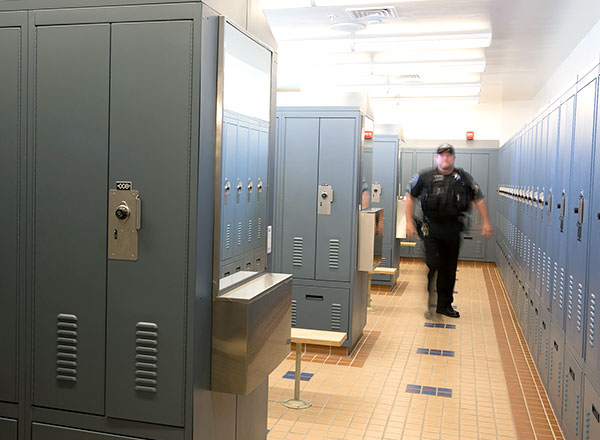
Trend Spotlight
We’re often asked this question: How do we decide how many lockers to put in the women’s locker room in relation to the men’s? Is there a formula to predict our department’s future gender mix?
Inclusive Locker Rooms
The answer is that there’s really no way to predict future hiring patterns. But we’re seeing a trend toward gender-neutral locker rooms, where all the lockers are located in a common area adjacent to private showers and changing rooms. This arrangement solves three problems at once:
- It eliminates the guesswork of trying to predict the gender ratio of your police department ten or twenty years into the future.
- It allows everyone to take part in conversations before and after shifts (we’ve heard that the one or two women on a shift feel excluded from these conversations).
- It creates a more inclusive environment.
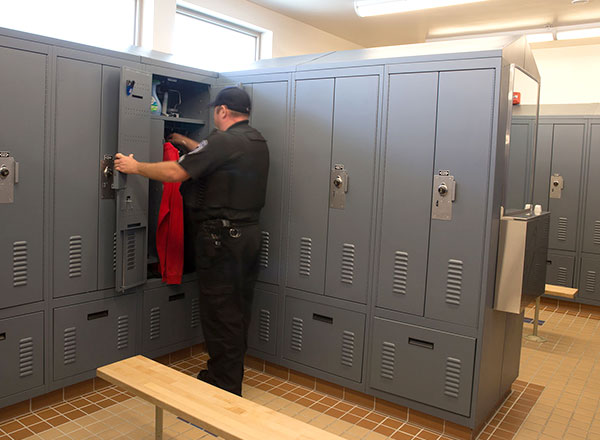
What needs to be stored in each locker.
You’ll also want to think about what needs to be stored inside each law enforcement locker, versus what can be stored in duty lockers, weapons racks, or other areas in the facility. That’s because even though you might want to maximize the number of lockers you have in the locker room, you also want to be sure the lockers are large enough to store everything comfortably without feeling too crowded or cramped.
ADA Compliance
Americans with Disabilities Act regulations apply to locker rooms. As of this writing, the pertinent requirements include the following (be sure to check for updated requirements).
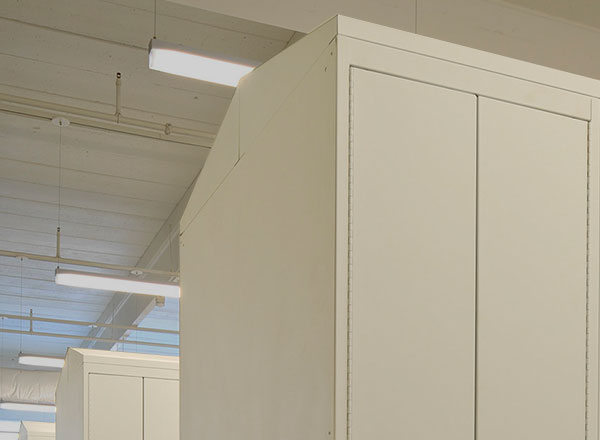
Ventilation
When designing your law enforcement locker room, consider integrating each locker with the facility’s HVAC system to provide ventilation for drying body armor, towels, and other items stored in lockers. Ductwork can be concealed behind a soffit or the lockers’ sloped tops.
Seating
Seating in a locker room promotes comfort and convenience. Benches are the most popular solution, and benches can be freestanding, bolted to a wall, or integrated into individual lockers. Here are the four most popular seating options in law enforcement locker rooms:
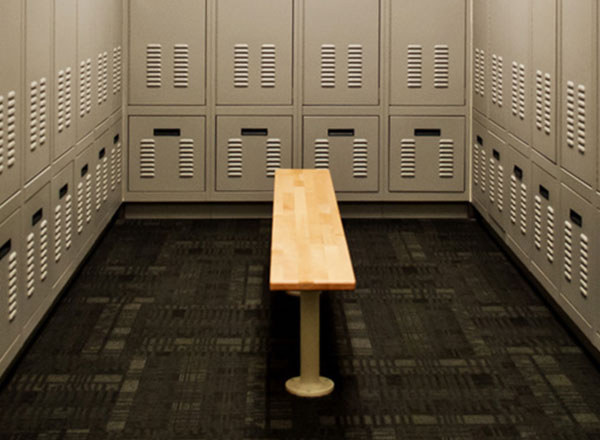
1. Freestanding Bench
This option takes up the most space, because people will need to access the bench from all sides.
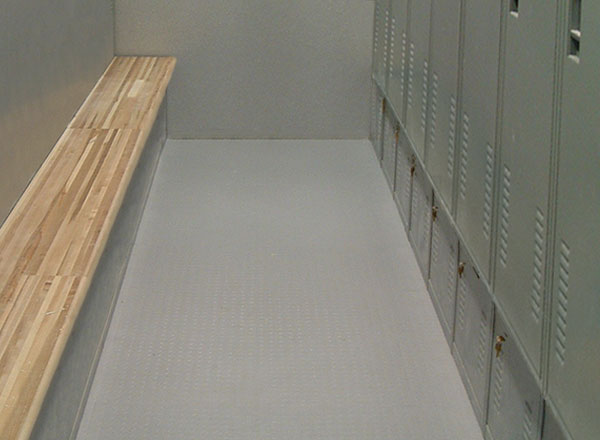
2. Bench Along a Wall
This option also takes up a lot of space because the wall behind the bench is unused.
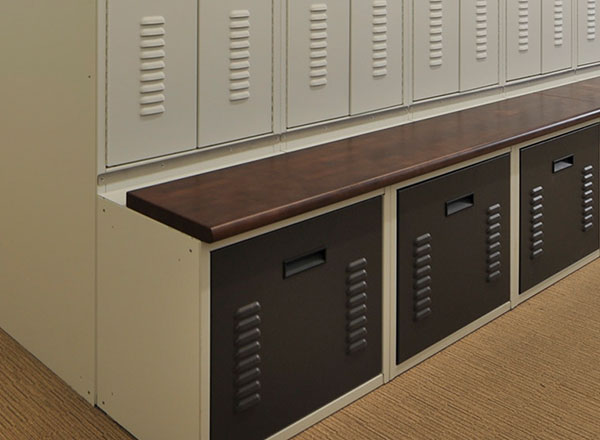
3. Locker with Bench and Drawer
Save space by integrating benches right into the lockers. You’ll also gain space for body armor drying racks, boots, or other gear in the drawer below the bench.
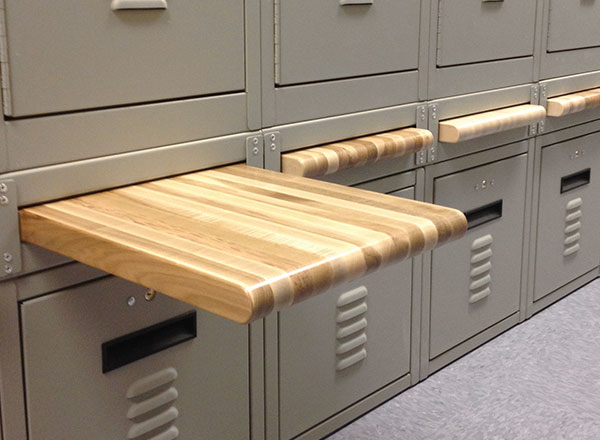
4. Retractable Bench In Locker
This is another space-saving option. Pull a bench out when needed and then push it back into the locker.
Indirect Lighting Integration
The sloped tops of lockers can also be used to create indirect lighting. The indirect lighting pictured here increased the light quality of the locker rooms and helped this police department achieve LEED certification.
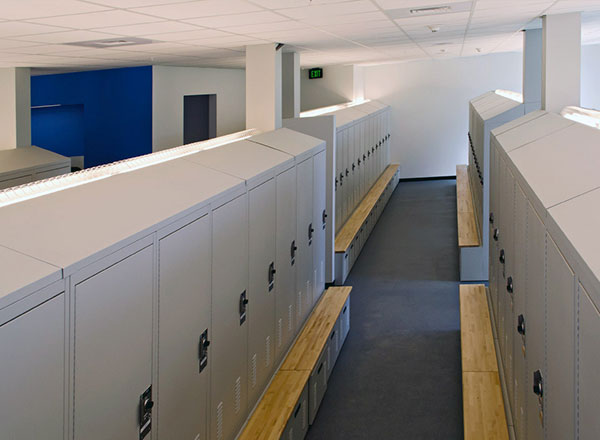
Looking for more information on law enforcement locker room design, including funding tips and best practices?
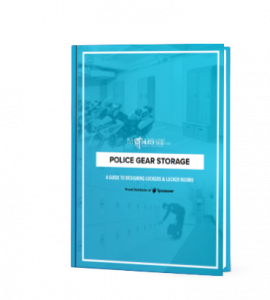

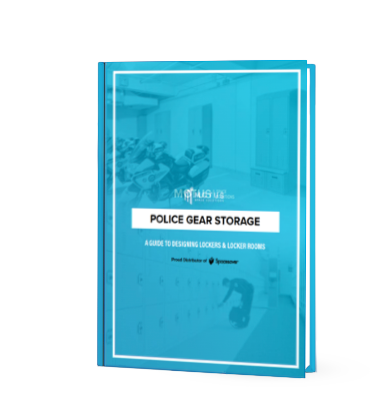

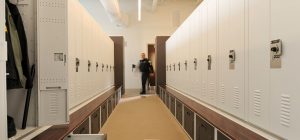
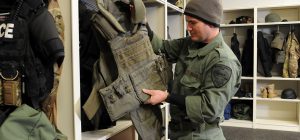
1 thought on “How to Design a Law Enforcement Locker Room”
Comments are closed.